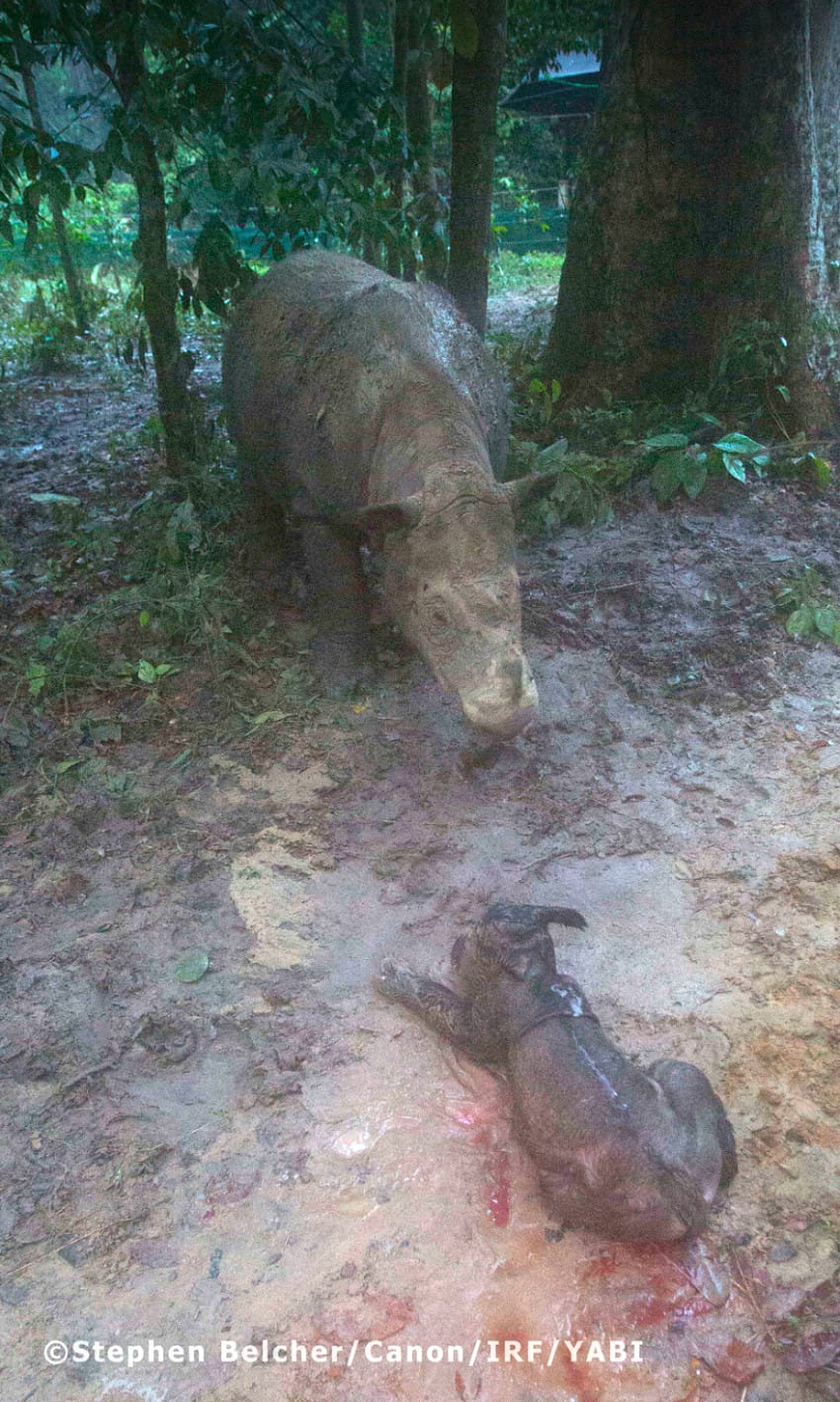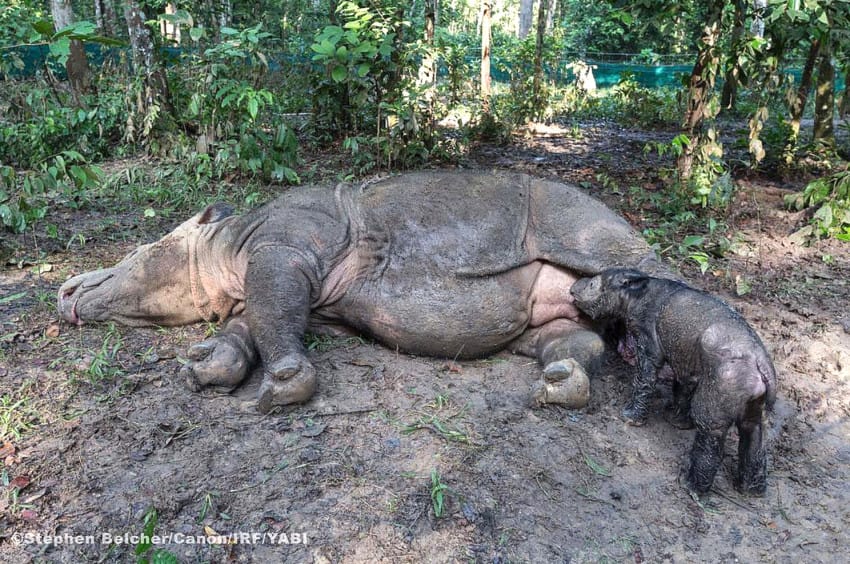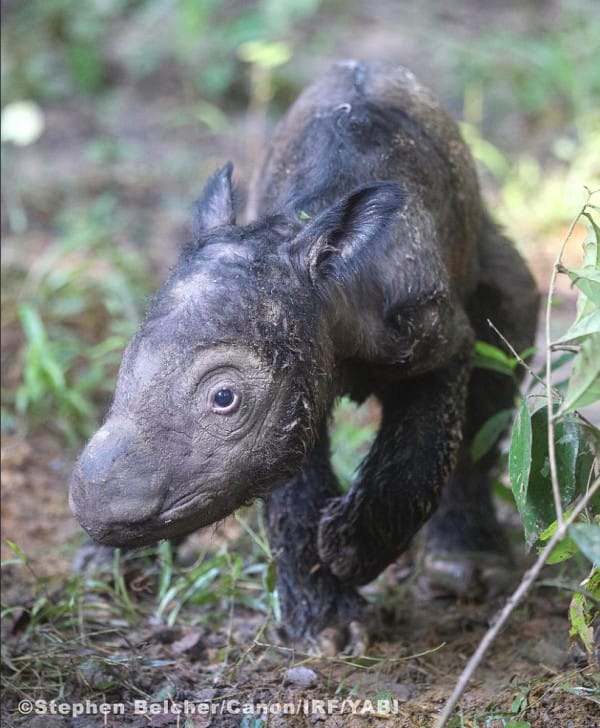Recently, there was a most unusual birth. In fact, it is so unusual that it has only happened twice in 128 years. The mother is Ratu, an Indonesia-born rhino. She lives on the Sumatran Rhino Sanctuary and this is her second calf. The first one was born in 2012.
These adorable babies are more than just a beautiful delivery, they are babies of the rarest large mammal on the planet. Sumatran rhinos are in a rapid state of decline. In fact, they were just declared extinct in the wild in Malaysia. Today, they only exist in Indonesia.
Thanks to the birth of Ratu’s calf, the population has just increased by 1 percent. It may not save the species, but it is a very important step in the right direction.
For many, this birth brings about new hope for all creatures who struggle. The following images can show you the beauty of this miraculous birth.

Last week, Ratu, a Sumatran rhino gave birth to a female calf. This is only the second Indonesian-based Sumantran rhino birth in over 128 years.
Ratu lives at the Sumatran Rhino Sanctuary. She is 14 years old and the birth took place without complication.
This species has fewer than 100 members left alive on earth. Truly, this birth was a miracle

This was not Ratu’s first calf. She had a son 4 years ago. They asked the director of the sanctuary if these two calfs would get time together. She said:
“Sumatran rhinos are solitary in nature, and so the conditions here are similar.
Andatu will likely not have the chance to spend time with his sister. In the wild, his mom would have already kicked him out of her territory.”

Ratu is a very good mother. Within moments after the birth, she was at the baby’s side, making sure it was all right.
They also say that Ratu was feisty, but the birth of the calves has calmed her down, even to the point where keepers could enter her pen.

The two greatest challenges to the species are poaching and the distribution of the small population.
”We support Rhino Protection Units (RPUs) in national parks on Sumatra, who spend 15-plus days out of every month in the field, patrolling, monitoring for rhinos, and deactivating snares.
Habitat loss from plantations, agriculture and mining has created small, isolated pockets of the population.
This means that rhinos living in these tiny pockets of remanent forest aren’t able to interact, and ultimately breed, with other rhinos.
A group of rhino conservation partners, including IRF, are working to create Intensive Protective Zones within protected areas (parks) and consolidating rhinos in these areas so they can be protected by RPUs and breed. We also support the SRS, where the baby rhino was born.”

Despite the challenges, Ratu delivered a healthy calf and they are optimistic she will continue to thrive.
“She’s absolutely adorable, and we haven’t stopped smiling since the moment we were sure she was alive and healthy.
While one birth does not save the species, it’s one more Sumatran rhino on Earth.”

Via: Little Things
Be sure to share this story with your friends on Facebook

